
Speed Busters is a video game developed by Ubisoft's Montreal studio for Microsoft Windows in 1998. It was released for the Dreamcast in 1999 as Speed Devils. This racing game features courses with hazards such as dinosaurs, rolling boulders, and UFOs set in exotic locales, including Louisiana, Louisiana Tornado, New York City, New York City Winter, Mexico, Nevada, Aspen Summer, Aspen Winter, Canada, Canada Light Winter, Canada Heavy Winter, Montreal Industrial, Hollywood, and Hollywood Disaster. The console version's career mode allows players to advance through the ranks of a fictional racing league. Colorful rivals challenge players to accomplish specific feats during races, placing bets using prize money earned from competitions. The money earned from gambling and performance is used to purchase cars, upgrade them, and maintain them. The game also supports up to five players on a single Dreamcast console.
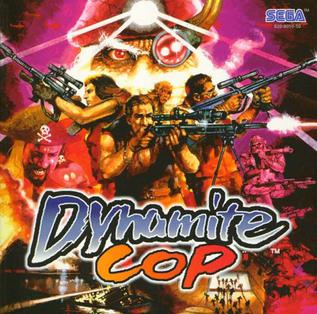
Dynamite Cop, known in Japan as Dynamite Deka 2, is a 1998 beat 'em up video game published by Sega and initially released in arcades on Sega Model 2 hardware. It is the sequel to the 1996 game Dynamite Deka, which was released outside Japan as Die Hard Arcade. The game was ported to the Dreamcast and released internationally in 1999, this time without the Die Hard license. A second sequel, Asian Dynamite, was released only in arcades. In 2002, an Xbox version was announced by Sega and Cool Net Entertainment under the joint brand name "CoolCool", but since then there has been no information and the project has been abandoned. CoolCool itself has not released anything other than Rent-a-Hero No. 1 and appears to have disappeared.

Tech Romancer is a 1998 3D fighting arcade game by Capcom that draws heavily from the various subgenres of mecha anime. It was later ported to the Dreamcast console. The player controls a giant robot which is used to fight another robot in one-on-one combat. Studio Nue designed the robots in this game.

CART: Flag to Flag, known as Super Speed Racing in Japan, is a racing video game developed by ZOOM Inc. and published by Sega for the Dreamcast console.

Millennium Soldier: Expendable, known in Japan as Seitai Heiki Expendable, and in North America as just Expendable, is a run and gun video game that was released by Rage Software for Microsoft Windows in 1999. It was later ported to the Dreamcast and PlayStation consoles. A remake of the game, entitled Expendable: Rearmed, was released for Android in 2012. It is in the format of a modern arcade game. The player starts with 7 "credits" and can continue until running out of credits. A second player can join the game at any time by pressing start.
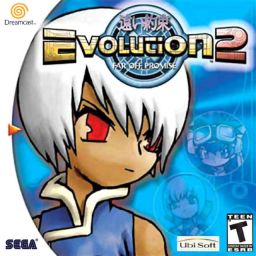
Evolution 2: Far Off Promise is a role-playing video game for the Dreamcast console. It is a sequel to Evolution: The World of Sacred Device. It was developed by Sting and published by Ubi Soft in North America. In Japan it was published by ESP, while in Taiwan a Microsoft Windows version was published by Dysin Interactive Corp.

Sega Rally 2 is an arcade racing game developed by Sega for the Model 3 arcade hardware. It is the sequel to 1994's Sega Rally Championship. The game was first released in arcades in February 1998, and was later ported to the Sega Dreamcast, becoming one of the console's earliest titles when it was released in Japan on January 28, 1999. The Sega Dreamcast version was released in Europe as a launch title on October 14, 1999, and then in North America on November 27. A PC version was released in Japan and Europe that same year, with the North American release following suit in November 29, 2000, where it was published by Mattel Interactive.
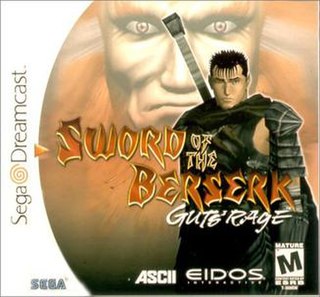
Sword of the Berserk: Guts' Rage, released in Japan as Berserk Millennium Falcon Arc: Chapter of the Flowers of Oblivion, is a 1999 hack and slash video game for the Dreamcast. It is based on the popular Berserk manga by Kentarō Miura and the game is set between volume 22 and 23 of the manga; right after Guts and Puck depart for Elfhelm with Casca, but before Farnese, Serpico, and Isidro catch up with them. The music is composed by Susumu Hirasawa, who also composed the anime series' music.
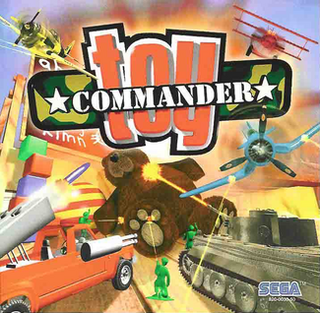
Toy Commander is an action game for the Dreamcast developed by No Cliché and published by Sega.
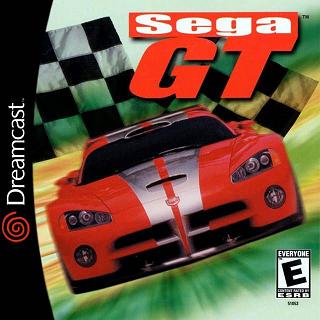
Sega GT, released in Japan as Sega GT: Homologation Special, is a sim racing video game co-developed by Wow Entertainment and TOSE, and published by Sega for their Dreamcast home console. The game was released in 2000. A Microsoft Windows version was published the following year—in Japan by Sega, in North America by Activision Value, and in Europe by Empire Interactive.
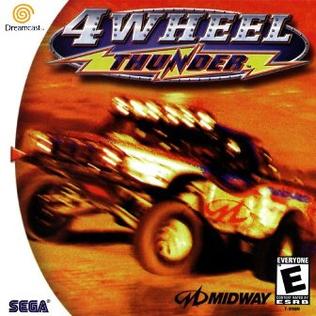
4 Wheel Thunder is a racing game developed by Kalisto Entertainment and published by Midway. While the game had been in development for some time prior as a separate title, it was eventually decided to rebrand the game into Midway's Thunder series.

Monaco Grand Prix: Racing Simulation 2, also known simply as Monaco Grand Prix or Racing Simulation: Monaco Grand Prix, is a Formula One racing game developed and published by Ubisoft for Windows, Nintendo 64, PlayStation, and Dreamcast. It was released between 1998 and 1999. A sequel, Racing Simulation 3, was released in 2002.

WWF Royal Rumble is a professional wrestling video game released in 2000 for arcades and the Dreamcast. THQ published the title for the Dreamcast while Sega released it for arcades. It is based on the World Wrestling Federation (WWF) professional wrestling promotion and its yearly Royal Rumble event. This game took its influence from the event's 2000 edition. Yuke's, creators of the WWF SmackDown! series, developed Royal Rumble, which had several unique features including support for up to nine wrestlers on the screen simultaneously.

JoJo's Bizarre Adventure is a fighting video game developed by Capcom based on Hirohiko Araki's manga of the same title. The game was developed by the same team who was responsible for the Street Fighter III series.

Slave Zero is a 1999 action video game developed and published by Infogrames North America.

Redline Racer is a racing game that was developed by Criterion Games and published by Ubi Soft.

Demolition Racer is a 1999 vehicular combat racing video game for the PlayStation, Dreamcast, and Microsoft Windows, developed by British studio Pitbull Syndicate and published by Infogrames North America.
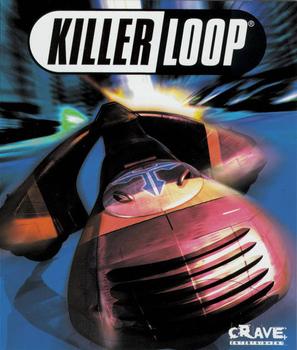
Killer Loop is a futuristic racing game released in 1999-2000. It was developed by VCC Entertainment and published by Crave Entertainment.

NBA 2K is a 1999 sports video game developed by Visual Concepts and published by Sega. The first game in the NBA 2K series, it was initially released for Dreamcast in 1999. Allen Iverson of the Philadelphia 76ers is featured as the cover athlete. The game is based on the National Basketball Association and, as such, allows the player to compete in basketball games with the current NBA season's players and teams. Several game modes are present, including one in which the player can create customizable players.

NFL 2K, sometimes called Sega Sports NFL 2K, is a video game based on the NFL developed by Visual Concepts and published by Sega for the Dreamcast in 1999.




















